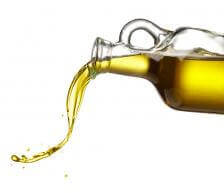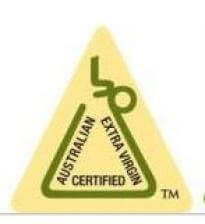How to Tell If Your Olive Oil is Authentic
Up to two thirds of extra virgin olive oil for sale is adulterated with cheap oil. How to know whether you’re getting the right stuff? Follow Nutrition Diva’s tips.


As you know, I am a big fan of olive oil and recommend it as an excellent all-purpose oil. It’s high in heart-healthy monounsaturated fats and antioxidants, it’s stable at high temperatures, and it tastes great. Olive oil that’s been diluted with soybean oil, on the other hand, is none of those things…and a waste of money besides.
How can you tell if the oil you’re buying is the real stuff?
Can You Trust the “Fridge” Test?
As I demonstrate in the short video at the top of the page, oils that are high in monounsaturated fat get thick and cloudy when you put them in the fridge. Oils that are high in polyunsaturated fats (such as soybean oil) don’t.
Dr. Oz recently suggested that you can determine whether your olive oil is pure by putting it in the fridge. If it gets cloudy, you’re all set. Unfortunately, researchers from UC Davis have determined that the “fridge” test is not a reliable way of detecting whether or not your oil has been adulterated.
Color is also not a reliable guide. Disreputable exporters add greenish pigments to make adulterated oils look more convincing. But, according to olive oil expert Tom Mueller, ” Good oils come in all shades, from vivid green to gold to pale straw.”
Look for Certification


And for more tips on buying and enjoying olive oil see Tom Meuller’s great blog at TruthinOliveOil.com.
See also: Do Olives and Olive Oil Have the Same Health Benefits?





